Is 184 blood sugar high. 184 Blood Sugar: Understanding and Managing Hyperglycemia
Is 184 blood sugar high? Are you suffering from untreated hyperglycemia? Discover the causes, symptoms, and effective strategies to manage high blood sugar levels.
Understanding Hyperglycemia: What is a High Blood Sugar?
Hyperglycemia, or high blood sugar, is a common condition that affects people with diabetes. It occurs when the body does not have enough insulin or is not using insulin effectively. Normally, people without diabetes maintain a fasting blood sugar of less than 100 mg/dl. The goal for managing diabetes is to keep glucose levels as close to this range as possible, typically between 80-130 mg/dl. However, a blood sugar level above 160-180 mg/dl is generally considered hyperglycemic.
Causes of Hyperglycemia: Why is My Blood Sugar High?
There are several factors that can lead to hyperglycemia, including:
- Inadequate insulin dosing: If the prescribed basal or bolus insulin doses are too low, it can result in high blood sugar levels.
- Insulin resistance: In type 2 diabetes, the body’s cells may not effectively recognize and use insulin, causing glucose to remain in the bloodstream.
- Eating more than planned: Underestimating carbohydrate intake and not adjusting insulin accordingly can lead to hyperglycemia.
- Lack of physical activity: Decreased exercise can cause blood sugar to rise, especially if insulin doses have been reduced in anticipation of activity.
- Illness or stress: Hormonal responses to sickness or stress can increase blood sugar levels.
- Certain medications: Some drugs, such as glucocorticoids, can impair the body’s ability to release and use insulin effectively.
- Dawn phenomenon: A natural rise in blood sugar that occurs in the morning due to hormonal changes.
Recognizing the Symptoms of Hyperglycemia
The symptoms of hyperglycemia can be subtle and vary from person to person. Some common signs include:
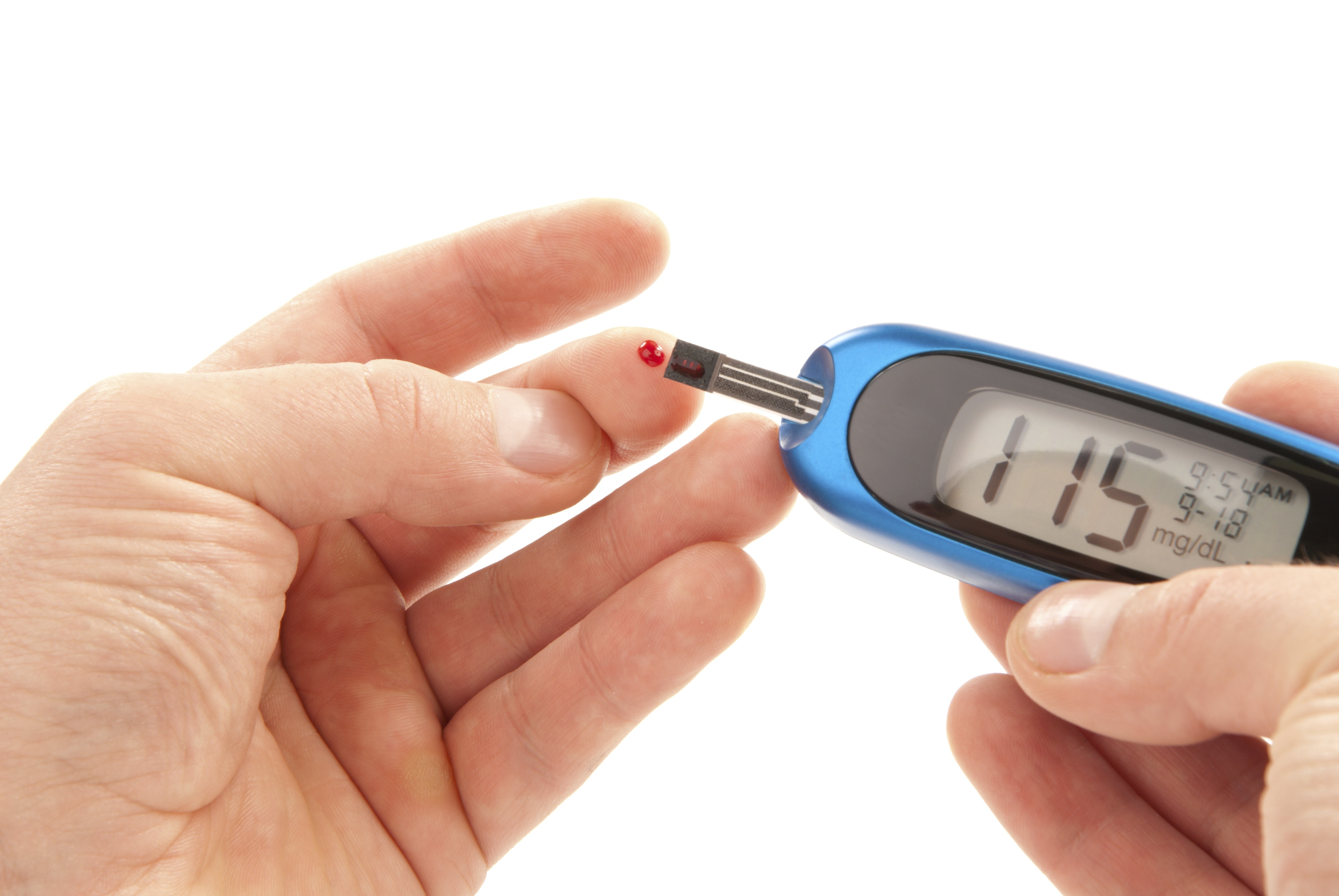
- Excessive thirst or drinking
- Frequent urination
- Blurred vision
- Fatigue or drowsiness
- Dry mouth
- Increased hunger
- Slow healing of cuts and bruises
It’s important to note that these symptoms may not always be present, especially if blood sugar levels are only mildly elevated. Regular blood sugar monitoring is crucial for detecting and managing hyperglycemia.
Consequences of Untreated Hyperglycemia
Leaving hyperglycemia untreated can lead to serious health complications, including:
- Diabetic ketoacidosis (DKA): A life-threatening condition where the body produces high levels of acidic ketones.
- Chronic kidney disease: High blood sugar can damage the kidneys over time.
- Nerve damage (neuropathy): Hyperglycemia can cause numbness, tingling, and pain in the extremities.
- Cardiovascular disease: Prolonged hyperglycemia increases the risk of heart disease and stroke.
- Vision problems: High blood sugar can lead to diabetic retinopathy, a leading cause of blindness.
Managing Hyperglycemia: Strategies for Keeping Blood Sugar in Check
Effective management of hyperglycemia involves a combination of lifestyle changes and appropriate medical treatment. Some key strategies include:
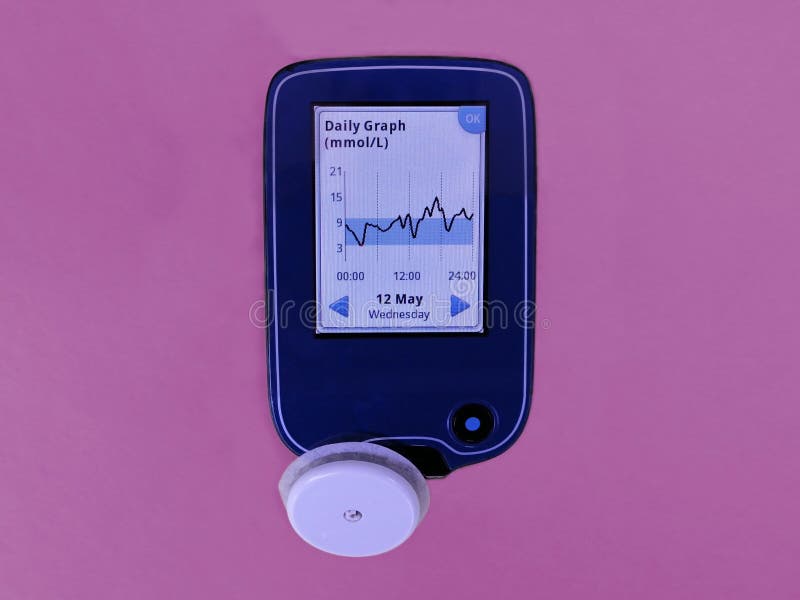
- Closely monitoring blood sugar levels: Regular glucose monitoring, either through finger-prick tests or a continuous glucose monitoring (CGM) system, is essential for identifying and addressing high blood sugar.
- Adjusting insulin doses: Working with your healthcare team to optimize your insulin regimen, including basal and bolus insulin, can help keep blood sugar within the target range.
- Modifying diet and exercise: Making healthy food choices, managing carbohydrate intake, and engaging in regular physical activity can all help improve blood sugar control.
- Addressing underlying health conditions: Treating any underlying factors, such as insulin resistance or medication side effects, can also contribute to better glycemic management.
- Seeking medical guidance: Regularly consulting with your healthcare provider, such as an endocrinologist or certified diabetes educator, is crucial for developing and refining your personalized diabetes management plan.
Preventing Hyperglycemia: Proactive Strategies for Long-Term Health
While hyperglycemia can be managed, it’s important to take proactive steps to prevent it from occurring in the first place. Some effective preventive measures include:

- Maintaining a healthy lifestyle: Adopting a balanced diet, engaging in regular physical activity, and maintaining a healthy weight can all help reduce the risk of hyperglycemia.
- Adhering to medication regimens: Consistently taking prescribed insulin or other diabetes medications as directed is crucial for maintaining optimal blood sugar control.
- Monitoring blood sugar patterns: Tracking your blood sugar levels, recognizing patterns, and addressing any issues promptly can help prevent hyperglycemia from becoming a chronic problem.
- Seeking regular medical care: Regular check-ups with your healthcare provider, including routine screening for diabetes-related complications, can help identify and address any issues before they become more serious.
Conclusion
Hyperglycemia, or high blood sugar, is a common and potentially serious condition that affects individuals with diabetes. By understanding the causes, recognizing the symptoms, and implementing effective management strategies, you can take proactive steps to maintain healthy blood sugar levels and prevent long-term complications. Remember to work closely with your healthcare team and make lifestyle changes to optimize your diabetes management and overall well-being.

Are You Suffering from Untreated Hyperglycemia?
Hyperglycemia, or high blood sugar, affects people who have diabetes. Since the symptoms are difficult to feel and easily go unnoticed, the condition often goes untreated. Prolonged hyperglycemia is the main cause of almost all the complications associated with diabetes but good blood sugar control can prevent them. The more you know about high blood sugar, the more likely you are to recognize it, treat it, and hopefully take steps to prevent it.
What is hyperglycemia?
Hyperglycemia is a fancy way to say “high blood sugar”. People without diabetes usually maintain a fasting blood sugar of less than 100 mg/dl. The goal for managing diabetes is to achieve glucose values as close to this as possible, but the recommended range is 80-130 mg/dl.
There is no specific value used to define hyperglycemia in all individuals. In general, a glucose level above 160-180 mg/dl is considered hyperglycemia. The best way to define it, though, is by talking with your medical team. Hyperglycemia is really defined as any blood sugar that is above the upper limit of your individualized range.
The best way to define it, though, is by talking with your medical team. Hyperglycemia is really defined as any blood sugar that is above the upper limit of your individualized range.
- Fasting hyperglycemia is a blood sugar that is higher than the desirable level after 8 hours without food or drink.
- Postprandial hyperglycemia is when the blood sugar is higher than 180 mg/dl 1-2 hours after eating a meal.
Both types of hyperglycemia may indicate the need to adjust your treatment plan. If you notice high blood sugars at the same time of day for 3 days in a row, this I considered a “pattern”. If you recognize a pattern, contact your doctor or dietitian for suggestions. Tracking your blood sugar allows early recognition of possible patterns and is an important way to self-manage and start problem solving.
What causes hyperglycemia?
Hyperglycemia happens either when your body does not have enough insulin, or when your body is not using insulin correctly.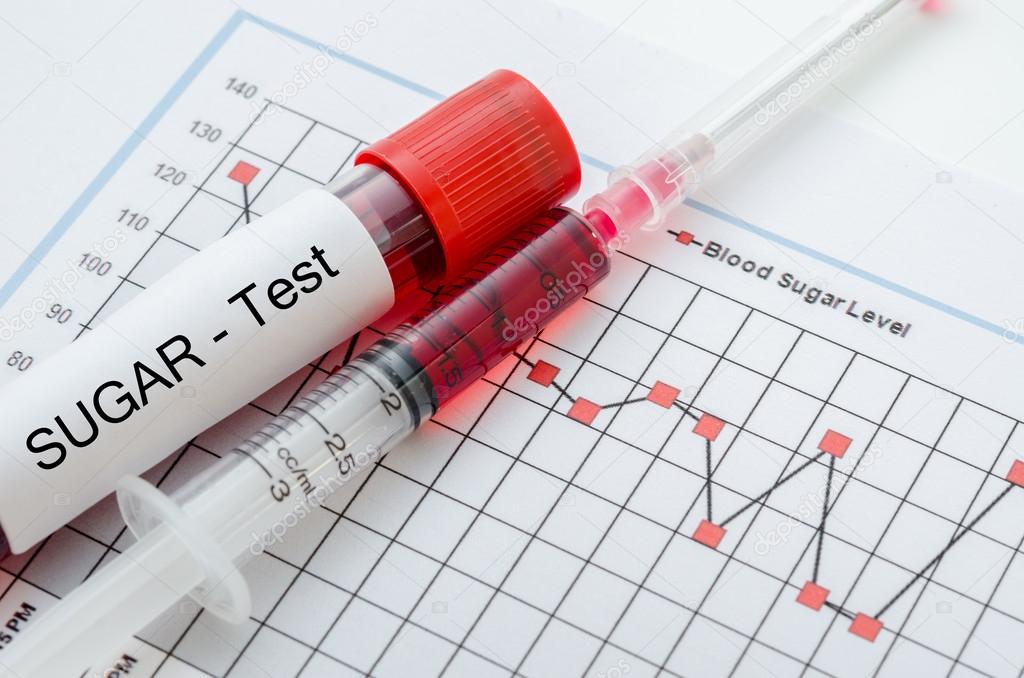 There are a variety of things that can lead to this, including:
There are a variety of things that can lead to this, including:
- Inadequate insulin dosing
Individuals on insulin may be prescribed basal and/or bolus doses. Bolus doses are given for 2 reasons:
- To cover carbohydrates intake for meals and snacks
- To correct high blood sugar
Basal doses are given to act as a “background” dose working over a 24-hour time frame. If either of these doses are too low, high blood sugar can occur. Expired or improperly stored medication may also cause hyperglycemia as these medications will not work as effectively.
- Insulin resistance
Individuals with Type II Diabetes experience insulin resistance. Even though the body still produces insulin, the body’s cells may not recognize the insulin as effectively. When this happens, excess insulin remains in the bloodstream but does not bring glucose into the cells. This means that the glucose stays in the blood, causing high blood sugar.
- Eating more than planned
Individuals with type I diabetes or those who dose insulin based on carbohydrate intake may, occasionally, underestimate their intake. When a person plans to eat 60 grams of carbohydrates but actually eats 90 grams, he/she will not have given enough insulin to cover the meal, leading to high blood sugar.
When a person plans to eat 60 grams of carbohydrates but actually eats 90 grams, he/she will not have given enough insulin to cover the meal, leading to high blood sugar.
- Not exercising as much as planned or inactivity
Since exercise lowers the blood sugar, most individuals decrease their insulin doses to avoid hypoglycemia when they anticipate that they will be active. If someone has decreased their insulin dose for exercise but then does not do the activity, it can cause high blood sugar.
- Illness (cold, flu, etc.) or stress
Stress triggers a variety of hormone responses in the body. Generally, when the body senses stress, it wants to ensure that you have the energy needed for “fight or flight”. Sugar is the body’s preferred energy source, so the hormones work to make energy (sugar) more available. This is one reason why you may find that your blood sugar is elevated when you are sick or stressed.
- Certain Medications
In some cases, medications may cause hyperglycemia. Glucocorticoids have been seen to cause high blood sugar. While the mechanism is not certain, it is likely that steroids impair the body’s ability to release insulin and may cause increased insulin resistance. This hyperglycemia usually resolves once you stop taking the steroid.
Glucocorticoids have been seen to cause high blood sugar. While the mechanism is not certain, it is likely that steroids impair the body’s ability to release insulin and may cause increased insulin resistance. This hyperglycemia usually resolves once you stop taking the steroid.
- Dawn Phenomenon
Symptoms of hyperglycemia
The symptoms of hyperglycemia are generic and difficult to pinpoint. Each person is different so one person may experience all symptoms while another may only recognize 1 or 2. Most symptoms do not occur until the blood sugar is above 200 mg/dl, but depending on your personal control, this may vary. If you are accustomed to blood sugars around 70-100 mg/dl, you may recognize symptoms sooner than someone who’s blood sugar is usually 180-200 mg/dl or higher. Symptoms may include, but are not limited to:
- Polydipsia: excessive thirst or drinking
The body may signal the need for more water to dilute and flush excess glucose.
- Polyuria: excessive urination
With increased thirst and drinking comes increased urination. The body does this to encourage glucose release via the urine.
- Polyphagia: excessive hunger
Even though the blood sugar is high, if there is not enough insulin to bring this sugar into the cells, the cells signal to the body that they want more energy. This promotes the release of hormones that trigger hunger.
- Dry mouth or skin
Increased urination can lead to dehydration.
- Fatigue
Extra sugar in the blood indicates unused energy. If there is not enough insulin to pull glucose into the cells, the cells become tired which can make you feel fatigued.
- Blurred vision
High blood sugar can cause swelling and possible changes in shape of the lens in your eyes. This makes it hard to focus and things may look fuzzy.
- Slow wound healing
High blood sugar stiffens the arteries and constricts blood vessels, which decrease blood flow. This limits oxygen and nutrient delivery to wounds and slows the healing process.
This limits oxygen and nutrient delivery to wounds and slows the healing process.
- Frequent infections
Hyperglycemia alters the effectiveness of immune cells, which increases infection risk. Decrease blood flow also limits the number of white blood cells available to fight infections.
- Frequent Headaches
- Unexplained weight loss
This usually happens in individuals with type I diabetes if there is absolutely no insulin in the blood stream. When there is no insulin, glucose cannot enter our cells. When organs recognize that they do not have glucose, they send out signals begging for energy. In this situation, the body begins to breakdown fat for energy, which can lead to rapid weight loss. This may sound desirable (who doesn’t want to burn fat for energy?!), but it is very dangerous situation that may indicate an emergency situation is coming. Since most people with type II diabetes still produce insulin, weight loss is not common with hyperglycemia because there is still some glucose available to the cells.
One of the most important parts of managing diabetes is monitoring your blood sugar levels. Next time you check your blood sugar and notice that it is elevated, take note of anything that might feel a little different in your body. Since the common symptoms of hyperglycemia are hard to recognize, it is important to keep track of your personal “red flags”.
Complications of hyperglycemia
Most of the complications of hyperglycemia are related to more long-term, prolonged high blood sugar, but there are 2 situations that are considered emergencies.
- Diabetic Ketoacidosis (DKA): This is usually only seen in individuals with type I diabetes when there is no insulin available. If there is no insulin, glucose cannot be used. If the body thinks there is no glucose, it breaks down fat for energy. This leads to the production of ketones. When ketones build up in the blood, the pH of the blood decreases, making it more acidic and life threatening. Eventually, ketones spill into the urine.
 Signs and symptoms of DKA are:
Signs and symptoms of DKA are:
- Blood sugar greater than 250 mg/dl
- pH less than 7.3
- Large ketones in the urine
- Nausea and vomiting
- “Fruity” smelling breath
- Labored breathing
- Lethargy or complete loss of consciousness
- Hyperglycemia hyperosmolar syndrome (HHS): This is more common in individuals with type II diabetes who still produce some insulin. In this situation, there is enough insulin to prevent the breakdown of fat for energy, but not enough to maintain normal blood sugar levels. Many people who experience HHS have not, yet, been diagnosed with diabetes. Signs and symptoms include:
- Blood sugar usually greater than 600 mg/dl
- pH greater than or equal to 7.3 (no acidosis)
- No ketones in the urine
- Signs of dehydration: loss of skin turgor, dry skin and chapped lips, tachycardia, low blood pressure
- Progressive loss of consciousness (can happen over days to weeks)
- Altered sensorium: difficulty concentrating
If not treated, both emergent complications can lead to coma and possibly death, but early detection and quick treatment make this very rare.
Most of us hear more about the complications related to prolonged untreated hyperglycemia, which are much more common. These include:
- Neuropathy: damage to the nerves, causing weakness, numbness, and/or pain
- Retinopathy: damage to the retina in the eye (usually due to decreased blood flow) that can lead to visual impairment
- Nephropathy: progressive kidney disease related to decreased blood flow to the kidneys
- Heart Disease: damage to blood vessels can lead to decreased blood flow to the heart and brain and may increase risk for CHF and a variety of other heart conditions.
All complications, both immediate and long-term, can be treated but early detection is the best way to lower the risk of all of the possible complications.
How to treat hyperglycemia
Just as there are immediate complications of hyperglycemia and long-term complications of hyperglycemia, there are also immediate and long-term treatment recommendations.
If you or someone you know are showing signs of either DKA or HHS, emergency treatment is required either via the emergency room or admission into the hospital.
Most instances of hyperglycemia are not emergent, though and can be treated at home in a variety of ways.
- Fast-acting insulin: Individuals with type I diabetes and those with type II diabetes on sliding scale insulin can use a bolus of fast-acting insulin to correct hyperglycemia. Insulin injection is the only way to immediately treat high blood sugar. You should start to see the blood sugar drop within about one hour, but you will not see the full effect for about 3-4 hours after injection. If your blood sugar does not start to come down after 3 hours, consider checking your insulin vile to make sure that it has not passed the expiration date or that there is nothing floating in the bottle that might have contaminated the medication. Contact your doctor if there’s no improvement in blood sugar. Oral medications work in a variety of ways, but none of them are used to treat high blood sugar in the moment.

If you notice a pattern of hyperglycemia, there are a variety of lifestyle changes that you can make to improve your overall control. Making these changes will help decrease the risk of the long-term complications of hyperglycemia. Consider changes you might be able to make in the following:
- Physical activity: regular physical activity (150 minutes per week) decreases blood sugar but should be avoided if ketones are present.
- Dietary modifications: Limiting sugary beverages and maintaining consistent carbohydrate intake throughout the day helps stabilize blood sugar.
- Medications: take medications as prescribed, track your glucose levels, and follow up with your medical team to determine if changes need to be made to your medication doses or regimen.
A diagnosis of diabetes can be overwhelming and it can be difficult to know where to start. Take things one step at a time. Set SMART goals and check in with your progress frequently. Treating hyperglycemia is just one part of managing diabetes.
How to avoid hyperglycemia
One high blood sugar reading does not indicate failure. People with diabetes should expect that their blood sugar will fluctuate. Rather than viewing an episode of hyperglycemia as something bad, looking at it as a learning experience may give us some benefit for the future. What caused the episode? Did I eat something different? Did I move more or less than usual? Was I ill or stressed? Taking the time to problem solve to avoid these situations in the future is one way to take control of your health.
The main goal of managing diabetes is to maintain a blood sugar as close to normal as possible. Recommendations for avoiding hyperglycemia are the same as the general recommendations for treating diabetes:
- Consistent carbohydrate intake
- Physical activity
- Take medications as prescribed
- Monitor blood sugar
It is important to do whatever you can to prevent, detect, and treat hyperglycemia. Regular follow up with your physician, and a dietitian are the best ways to stay ahead of the disease. Since diabetes is a progressive condition, maintaining a blood sugar within the recommended range allows us to prevent or slow the progression of complications of hyperglycemia. If you are suffering from one or more complications of high blood sugar, there is help!
Regular follow up with your physician, and a dietitian are the best ways to stay ahead of the disease. Since diabetes is a progressive condition, maintaining a blood sugar within the recommended range allows us to prevent or slow the progression of complications of hyperglycemia. If you are suffering from one or more complications of high blood sugar, there is help!
Dietitians at Home has a staff of Registered Dietitians who will come to your home. Our dietitians will support you in achieving your healthy lifestyle goals.
What’s the Normal Range for Blood Sugar?
Last updated: May 9th, 2022
If you have been told to watch your blood sugar levels, you may feel a bit overwhelmed. There is a lot of information to understand, and it’s hard to keep track of all of the different numbers and what they mean.
In this article, we will break it all down for you so that it is easy to understand. Let’s start by reviewing the basics of how blood sugars work and learning why it’s so important to keep your blood sugar levels in check. Then, we will get into what blood sugar levels to aim for, how to monitor your levels at home, and what to do if your numbers are higher than they should be.
Then, we will get into what blood sugar levels to aim for, how to monitor your levels at home, and what to do if your numbers are higher than they should be.
Blood sugar basics: what is blood sugar?
The term “blood sugar” refers to the sugar, or glucose, that is floating around in your bloodstream at any given time. Blood sugar, or blood glucose is the main source of sugar found in your blood, and comes from the food you eat.
If you are monitoring your blood sugar, it is important to keep these numbers in check according to the American Diabetes Association (ADA).
Your blood sugar needs to be in the right range for you to be healthy. At least some glucose is necessary for your muscle, liver, and some other cells to use as fuel so they can function.
At least some sugar is necessary for your cells and organs to function properly. When our blood sugar levels get too low, it is called hypoglycemia. Without enough glucose as fuel, we lose the ability to function normally. This can make us feel weak, dizzy, and sweaty. And it can even lead to loss of consciousness.
This can make us feel weak, dizzy, and sweaty. And it can even lead to loss of consciousness.
On the other hand, blood sugar levels that get too high are also harmful, this is called hyperglycemia. Our blood sugar levels can get too high when we don’t have enough insulin, or when our insulin isn’t working well. This is the case for people who have prediabetes or diabetes. If it isn’t treated, high blood sugar can lead to serious problems that can be deadly
The Centers for Disease Control and Prevention (CDC) explains that keeping blood sugar levels in the target range is vital. It can help us prevent serious health concerns like heart disease, vision loss, and kidney disease, for example.
A blood sugar chart can help you remember which levels you should opt for!
Different levels and what they mean
The ranges of safe levels of blood glucose depend on factors such as what time of day it is and when you last ate. Safe levels of blood sugar are high enough to supply your organs with the sugar they need, but low enough to prevent symptoms of hyperglycemia or complications of diabetes which follow the National Institute of Diabetes and Digestive and Kidney Diseases (NIDDK) guides. Dangerous levels of blood glucose are outside of this range.
Dangerous levels of blood glucose are outside of this range.
The target levels can also vary if you have diabetes. For example, if you are diabetic and are monitoring your blood sugar, you might get a reading of 65 mg/dl. That is considered to be mild hypoglycemia, and you would be wise to eat 15 grams of fast-acting carbohydrates and retest your blood sugar in 15 minutes.
If you were not diabetic, you probably would not know that your sugar was low because you would not test and because you would not symptoms, and you would not act.
That is fine because your body is capable, under normal circumstances, of raising your blood glucose to healthy levels when needed, even if you have not eaten. It is important to keep them in control to help prevent issues like heart disease or nerve damage.
Looking for the best prediabetes diet? Learn what foods are best to help you manage your prediabetes.
What are “normal” blood sugar levels?
You might want to measure your blood sugar before meals to get a baseline, and then two hours after your meal to measure your “normal blood sugar level”.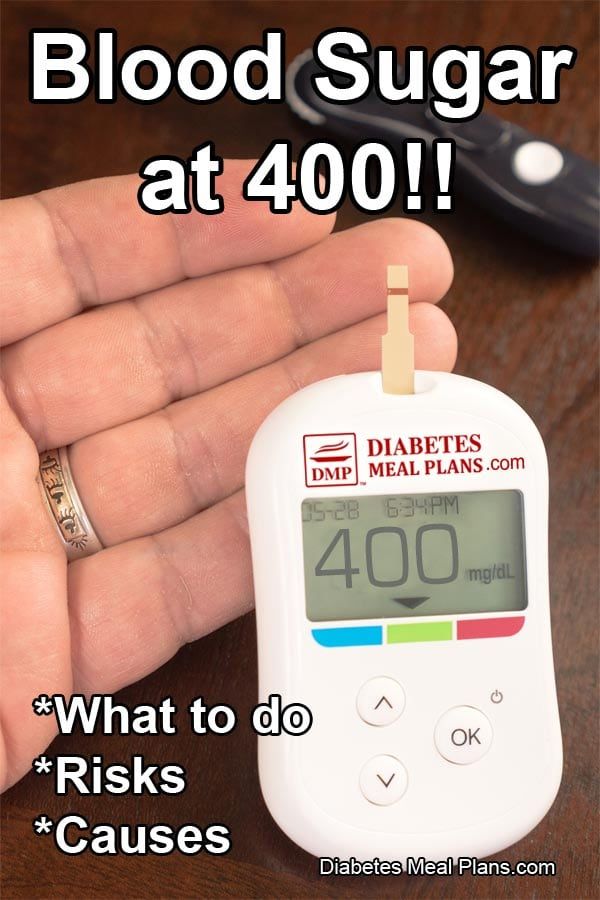 Your doctor might also suggest measuring blood sugar before bed to be sure you have been eating well throughout the day and can go to sleep with peace of mind.
Your doctor might also suggest measuring blood sugar before bed to be sure you have been eating well throughout the day and can go to sleep with peace of mind.
These are considered within the range of “normal” for blood sugar:
- Less than 140 mg/dl if you do not have diabetes.
- Less than 180 mg/dl if you have diabetes.
Levels in the Morning
The best time to check blood sugar levels in the morning is right when you wake up and before you eat anything. This gives you a glimpse of what may be happening overnight, and it gives you a baseline for the day.
What should my blood sugar level be when I wake up?
These are goal levels, according to The Joslin Diabetes Center:
- Under 100 mg/dl if you do not have diabetes.
- 70 to 130 mg/dl if you have diabetes.
The dawn effect can often lead to a high morning measurement in diabetes. This is your body’s tendency to get ready for the day by raising blood sugar by increasing levels of counter-regulatory hormones – the ones that counteract insulin as in normal blood sugar. For people with diabetes, you do not have the capacity to counterbalance this rise in blood sugar, so levels can be dangerously high.
This is your body’s tendency to get ready for the day by raising blood sugar by increasing levels of counter-regulatory hormones – the ones that counteract insulin as in normal blood sugar. For people with diabetes, you do not have the capacity to counterbalance this rise in blood sugar, so levels can be dangerously high.
Ways to lower your morning blood sugar value include:
- Eating dinner earlier
- Checking your medications – making sure you are taking them properly and asking your doctor if they are correct
- Going for a walk after dinner
- Including protein with your dinner
Blood Sugar Levels 2 Hours After You’ve Eaten
Many foods have types of carbohydrates called starches and sugars. When you eat foods with these types of carbohydrates, your body breaks them down into glucose, which is a type of simple sugar, and releases the glucose into your bloodstream. Aside from glucose produced by your liver, food is the main source of plasma glucose.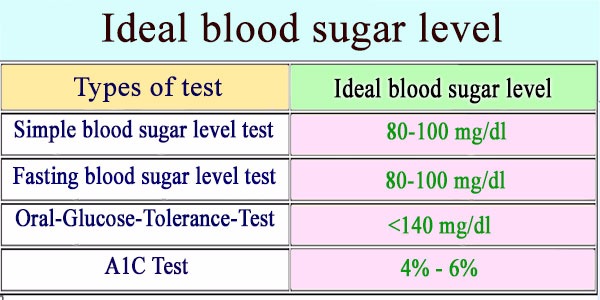
Two hours after eating, your blood sugar levels rise. They rise more when you eat more carbohydrates, when you do not eat fiber, fat, or protein with your carbs, and when you eat certain types of carbohydrates, such as refined sugars and starches.
These are target values from The Joslin Diabetes Center, which include levels for people with diabetes:
| When Measured | Goals for Healthy Adults | Goals with Diabetes |
|---|---|---|
Before lunch, dinner, or a snack | Less than 110 mg/dl | 70-130 mg/dl |
2 hours after you eat | Less than 140 mg/dl | Less than 180 mg/dl |
Before bedtime | Less than 120 mg/dl | 90-150 mg/dl |
Blood Sugar Levels During Pregnancy
The NIDDK states that gestational diabetes is high blood sugar that occurs during pregnancy if you were not diabetic before getting pregnant. Healthy blood sugar during pregnancy can help lower your risk of developing type 2 diabetes later. It can also lower the risk of your baby being born prematurely, at a high birth weight, and having respiratory problems.
Healthy blood sugar during pregnancy can help lower your risk of developing type 2 diabetes later. It can also lower the risk of your baby being born prematurely, at a high birth weight, and having respiratory problems.
Blood sugar and insulin levels during the first trimester of pregnancy tend to be lower than usual, but they rise during the late second and early third trimesters. You can be diagnosed with an oral glucose tolerance test (OGTT). [7]
These are the steps for the 2-step strategy.
- Drink a solution with 50 grams (200 calories) of glucose – about the amount in 1 16-oz. bottle of a soft drink
- Get your blood drawn after 1 hour. Ig the value is high, retest…
- Fast overnight
- Drink a solution with 100 grams (400 calories) of glucose – about the amount in 12 peanut butter cups
- Get your blood drawn immediately and after 1, 2, and 3 hours
Or, your doctor might use the 1-step strategy with a 2-hour OGTT:
- Fast overnight
- Drink a solution with 75 grams of glucose (300 calories – about the amount in 2 cans of soda)
- Get your blood drawn immediately and after 1 and 2 hours
These are some values to know from NIDKK related to gestational diabetes and healthy blood sugar in pregnancy.
| Time or Situation | Blood Sugar Values | |
|---|---|---|
| Diagnosis – 1-hour OGTT
Any of the following are indicative of gestational diabetes. | Fasting: 92 mg/dl |
|
| Diagnosis – 2-hour OGTT
Getting 2 or more of the values shown is indicative of gestational diabetes. | Baseline: at least 95 mg/dl | (Alternative Method) |
Hemoglobin Chart
Hemoglobin is the oxygen-carrying protein in your red blood cells, but it is highly relevant to blood sugar levels. Sugar in your blood attaches to hemoglobin, creating what is called glycated hemoglobin, or A1c (or Hba1c). High blood glucose levels lead to more hemoglobin being glycated.
Sugar in your blood attaches to hemoglobin, creating what is called glycated hemoglobin, or A1c (or Hba1c). High blood glucose levels lead to more hemoglobin being glycated.
Measuring your A1C is an alternative to measuring fasting blood glucose. Measuring blood glucose directly with a finger prick (glucometer) or a blood draw at your doctor’s office lets you know your blood sugar at that moment, while the A1c value you get provides an estimate of your average blood sugar levels over the past 3 months.
For example, if your A1c value is 7.8 (a reading between 140-199 mg/dl) would be considered high.
| Glycated Hemoglobin (A1C or Hba1c) Value | Estimated Average Glucose (EAG) |
|---|---|
5.6% (Highest “normal” value) | 114 mg/dl |
5. | 117 mg/dl |
6% | 126 mg/dl |
6.4% (Diabetes) | 137 mg/dl |
7% (Goal in diabetes) | 154 mg/dl |
8% | 183 mg/dl |
9% | 212 mg/dl |
10% | 240 mg/dl |
Printable Blood Sugar Chart
A blood sugar chart showing goal values can help you quickly gauge how you are doing with your monitoring.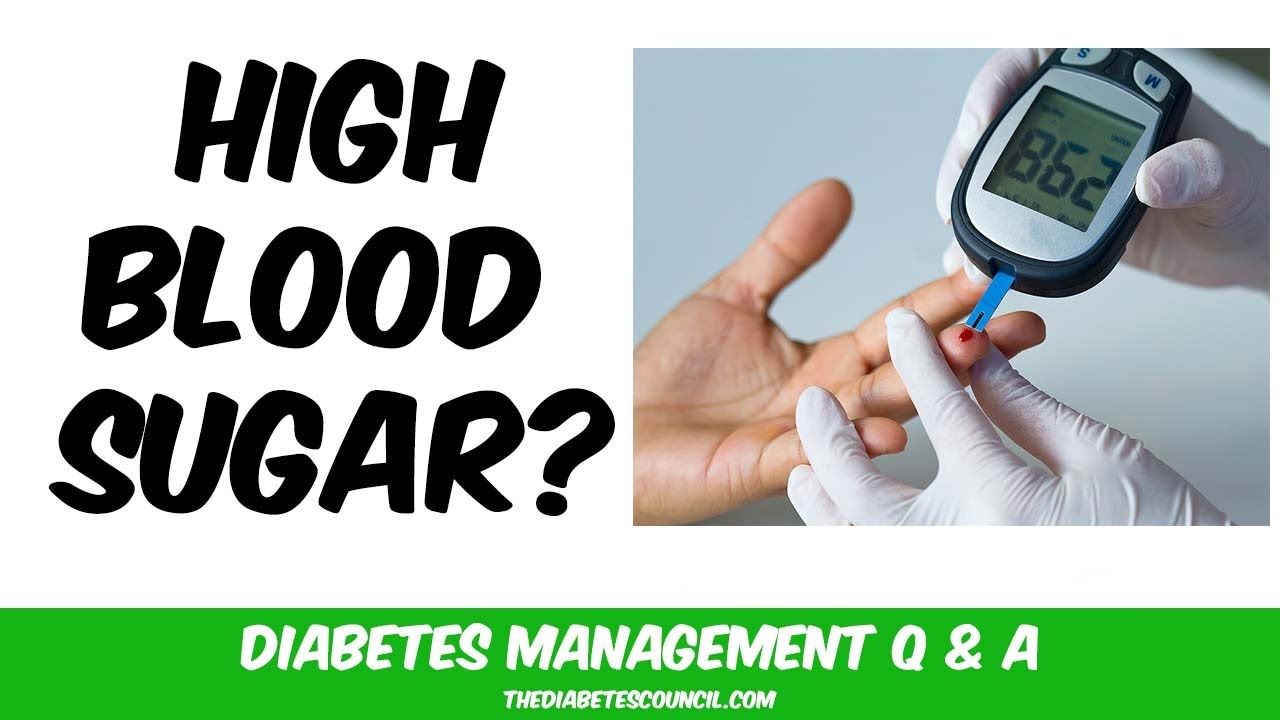 This chart shows what to aim for throughout the day if you have diabetes or not. [9]
This chart shows what to aim for throughout the day if you have diabetes or not. [9]
| Time and Situation | Goal for Non-Diabetics | Goal for Diabetics |
|---|---|---|
First thing in the morning (fasting | < 100 mg/dl | 70 – 130 mg/dl |
Before lunch, dinner, and snacks | < 110 mg/dl | 70 – 130 mg/dl |
Two hours after starting to eat a meal or snack | < 140 mg/dl | < 180 mg/dl |
Before going to bed | < 120 mg/dl | 90- 150 mg/dl |
You can also click here for a printable blood sugar chart showing target values at different times of the day for diabetics and non-diabetics.
Blood Sugar Level Chart by Age
Blood sugar levels tend to rise with age due to an increase in insulin resistance and decrease in insulin sensitivity. In one study by the National Health Institute (NIH), each extra decade of age was linked to a 2.7 mg/dl increase in fasting glucose, and a 4.5 mg/dl increase in 2-hour post-prandial (post-meal) glucose levels.
How to Reduce Blood Sugar
You can take steps to reach your blood sugar goals as soon as you find out that it is high. This is how to reduce blood sugar if you have a single high reading that may be dangerous:
- Ask your doctor what to do if you missed a dose of insulin or another diabetes medication
- Ask your doctor if your medication types and doses are still appropriate for you
- Drink water to dilute the sugar
- Exercise (if safe) for 15 minutes
- Eat a small protein snack, such as a hard-boiled egg, 1/2 ounce of peanuts or pistachios or other nuts, 1/2 cup of beans, or 1/2 cup of plain yogurt or cottage cheese
If you have chronically high blood sugar in prediabetes or diabetes, you can follow this treatment plan:
- Exercise regularly, assuming your doctor approves it
- Lose weight if you are overweight or obese
- Eat a higher proportion of vegetables, whole grains, lean proteins, healthy fats, and fruit
- Limit sugary foods and beverages, fried foods, refined starches, and processed and fatty red meats
- Beware of starchy vegetables such as sweet potatoes, which can spike your blood sugar.
 Check out our guide of which veggies to avoid!
Check out our guide of which veggies to avoid!
Glycemic Index Calculator
If you have been tested, then what? A blood sugar level calculator can help you put the results into terms you can understand after you have used a glucose meter. For example, it can convert mg/dl into mmol, or mmol into mg/dl, depending on which value your test results state for glucose levels.
A calculator can also change A1C into EAG, or estimated average glucose.
Calculate yours with the American Diabetes Association’s calculator!
Fasting Blood Glucose Level Test Preparation
What should you do if your doctor orders a fasting blood sugar test? The preparation is the same as when you take a fasting test for cholesterol. First, be sure to find out if you need to schedule an appointment for your test (some people need to; others have providers that do not require an appointment for blood tests). Ask your doctor what time is best to take it.
Then:
- Schedule your test if necessary
- Ask your doctor if you need to change any of the medications you take on the morning of the test
- If you normally drink coffee or have caffeine, ask your doctor if that is okay.
 It may not be, since it affects blood sugar levels
It may not be, since it affects blood sugar levels - Fast for at least 8 hours before your test. Usually, an overnight fast is most convenient
- You can drink water
How to Check Your Blood Sugar Levels of Urine at Home
A home urine test can show if you are excreting glucose in your urine. That only happens when blood glucose is high, and not if your values are within a healthy range. The urine test uses a test strip and is simple to do, but is not very precise.
Blood Glucose Tests
Blood tests are more common urine tests for measuring blood sugar. They are precise, quick, and not overly painful. A blood-testing machine is also called a glucometer. It is not being overly dramatic to say that a good home glucometer can be life-saving if you have diabetes, since monitoring with a blood sugar chart is one of the top strategies for controlling it.
A good home glucometer:
- Is simple, fast, and accurate
- Is easy to set up and use
- Pairs with a diabetes smartphone app so you can see your values instantly, track them over time, and get coaching and feedback
Lark Diabetes Coach comes with a complete home glucometer kit that is shipped to you and is easy to set up.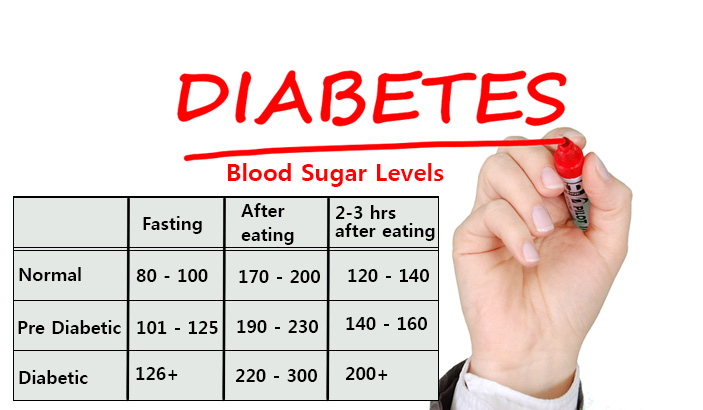 The Lark app walks you through setup and reminds you when to take your blood sugar.
The Lark app walks you through setup and reminds you when to take your blood sugar.
Accurate measurement of blood sugar
(098) 309 03 03
(099) 309 03 03
st. St. Nicholas, 53a st. Fanatskaya, 19 st. Dneprovskaya, 24
Zaporozhye. We work daily from 8:00.
(093) 309 03 03
Write to Viber
Online Declaration
Blood sugar testing in the laboratory of St. Nicholas Clinic at an affordable price
Glucose is the main source of energy for our body. It serves as a kind of “fuel”, the combustion of which provides energy to each cell, starts metabolic processes, which is the basis of life. But it is very important that the blood glucose content is at an acceptable level – an excess of a substance, just like a deficiency, adversely affects the work of all organs and systems. To control the level of monosaccharide, it is recommended to regularly take a blood test for glucose.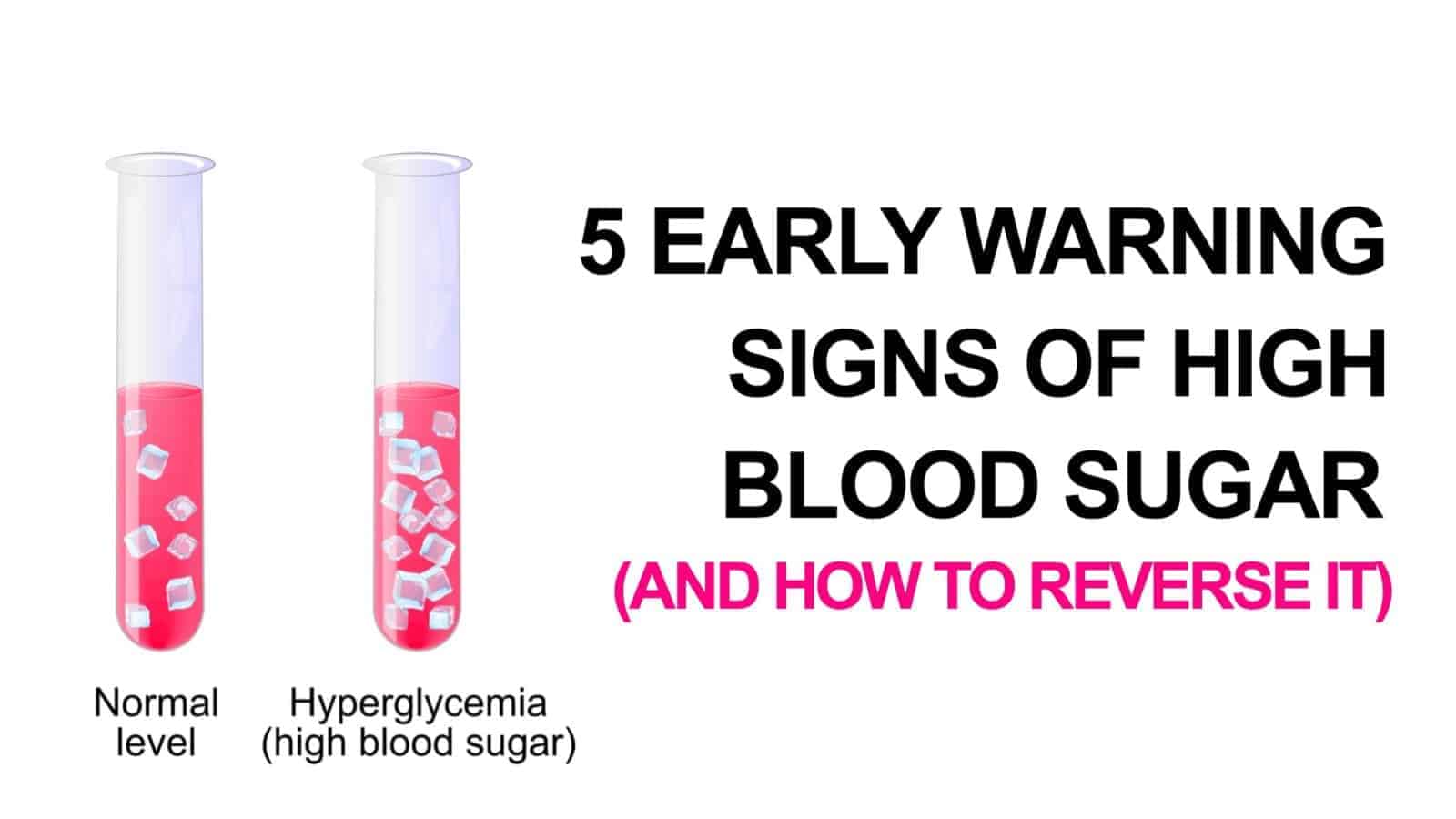 This can be done at the Clinic of St. Nicholas in a modern laboratory.
This can be done at the Clinic of St. Nicholas in a modern laboratory.
Preparing for a blood glucose test
In principle, special preparation for the study is not required. Blood donation for glucose is carried out on an empty stomach, after an 8-10 hour break in food intake. Depending on the chosen technique, blood sampling is carried out from a finger or from a vein.
A blood test for sugar should be carried out against the background of your standard diet – you do not need to follow any diets, strictly limit yourself to eating sweets. But for more accurate results, 1-2 days before the planned diagnosis, it is recommended to give up fatty, fried, high-calorie foods, do not overeat. During the day, do not drink alcohol, carbonated sweet drinks, coffee and tea in large quantities.
It is also advised to avoid strenuous physical activity and stress – this increases the level of insulin in the blood and the results may be underestimated.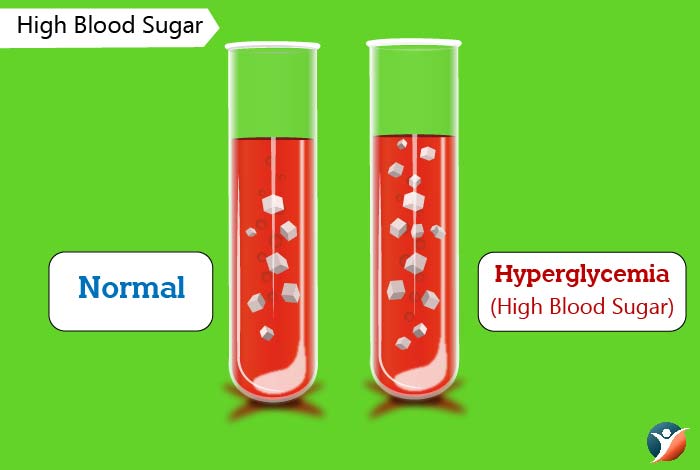
Glucose: normal in the blood
Normal fasting blood sugar:
- For adults – 3.5-5.7 mmol / l
- For the elderly, pregnant – 4.2-6.4 mmol / l
For the test with a load (measurement of sugar 2 hours after eating), their own norms are set – a glucose level of up to 7.8 mmol / l is allowed.
Only a qualified specialist can correctly formulate a conclusion about the test results – at the Clinic of St. Nicholas, an experienced endocrinologist is engaged in the interpretation and evaluation of the test data.
Abnormalities
Blood sugar concentration up to 6.1 mmol/l indicates impaired glucose tolerance, and above 6.1 may be the basis for diagnosing diabetes mellitus. Symptoms that may indicate an increase in blood glucose:
- Frequent urination
- Thirst
- Fog in the eyes
- Fatigue, lethargy
- Slow healing of even minor wounds, scratches
Hyperglycemia can be observed in diabetes mellitus, gestational diabetes, active infection, trauma, diseases of the endocrine system (especially the thyroid gland), after surgery.
Low blood sugar says:
- Rapid heartbeat
- Feeling of anxiety, fear
- Trembling limbs
- Confusion
- Sweating
Hypoglycemia in patients with diabetes mellitus may occur as a result of an overdose of insulin or hypoglycemic drugs, skipping meals, alcohol consumption, exercise. Also, a decrease in blood sugar will be with oncology, severe liver disease, alcohol intoxication, eating disorders (starvation, malabsorption of substances in the intestine), and fever.
Eating, alcohol, stress, exercise, some infections may interfere with test results. It also creates inaccuracies when taking certain drugs:
- Corticosteroids
- Antipsychotics, antidepressants
- Hormonal contraceptives
- Some antivirals
- Cough syrups (especially those containing sugar)
- Immunosuppressants
- Adrenaline
- Statins
- Aspirin
- Magnesium salicylate
To get the most reliable results, you must stop taking the above medications. However, this must be done under the supervision of the attending physician.
However, this must be done under the supervision of the attending physician.
Facilities for visitors of St. Nicholas Clinic
Private parking
Payment by card
Online appointment
Pharmacy in the building
Children’s room
Electronic medical record
Increased glucose level. How to be and what to do?
04/04/2022
In the body, all metabolic processes occur in close connection. When they are violated, a variety of diseases and pathological conditions develop, among which there is an increase in blood glucose.
Now people consume a very large amount of sugar, as well as easily digestible carbohydrates. There is even evidence that in the last century their consumption has increased 20 times. In addition, people’s health has recently been negatively affected by ecology, the presence of a large amount of unnatural food in the diet.
Signs of an increase in blood sugar are very common in people, and the number of cases of diabetes in developed countries is now increasing every year.
Glucose is one of the main sources of energy and a universal fuel for cells, thanks to which our body performs a huge number of functions – for example, such as the work of the cardiovascular, nervous, and digestive systems.
The amount of glucose in the blood is called the sugar level and its rate depends on the work of the pancreas. This indicator can be influenced by factors such as: muscle activity, emotional state, diet.
A change in blood sugar levels is a signal of pathological processes in the body and may be a symptom of the development of serious diseases. Glycemia is the amount of glucose in a person’s blood. To understand the essence of this concept, it is important to know what glucose is and what should be the indicators of glucose content.
The level of sugar in the blood, the norm of which is important for the normal functioning of the body, regulates insulin. But if enough of this hormone is not produced, or tissues respond inadequately to insulin, then blood sugar levels increase. The increase in this indicator is affected by smoking, unhealthy diet, stressful situations.
But if enough of this hormone is not produced, or tissues respond inadequately to insulin, then blood sugar levels increase. The increase in this indicator is affected by smoking, unhealthy diet, stressful situations.
The answer to the question, what is the norm of sugar in the blood of an adult, is given by the World Health Organization. There are approved norms of glucose. So, if the indicators are below the norm, then the person has hypoglycemia, if higher – hyperglycemia. You need to understand that any option is dangerous for the body, as this means that violations occur in the body, and sometimes irreversible.
It is generally accepted that if capillary and venous blood is examined, then the result may fluctuate slightly. Therefore, when determining what the normal glucose content is, the result is slightly overestimated. The norm of venous blood is on average 3.5-6.1, capillary blood – 3.5-5.5. The norm of sugar after eating is up to 7.8 mmol / l. Above this indicator in healthy people, sugar does not rise.
But if the norm of glucose in the blood is slightly exceeded, and the indicators in the analysis from the finger are 5.6-6.1, and from the vein it is from 6.1 to 7, this condition is defined as prediabetes (impaired glucose tolerance).
With a result from a vein of more than 7 mmol / l (7.4, etc.), and from a finger – above 6.1, we are already talking about diabetes. For a reliable assessment of diabetes, a test is used – glycated hemoglobin.
Elevated blood sugar can be determined if a person has certain signs. The following symptoms, manifested in an adult and a child, should alert a person:
– weakness, severe fatigue; – increased appetite and at the same time weight loss; – thirst and a constant feeling of dryness in the mouth;
– profuse and very frequent urination, night trips to the toilet are typical; – pustules, boils and other lesions on the skin, such lesions do not heal well;
– regular manifestation of itching in the groin, in the genitals;
– deterioration of immunity, deterioration in performance, frequent colds, allergies in adults;
– deterioration of vision, especially in people who are already 50 years old.
The manifestation of such symptoms may indicate that there is an increased glucose in the blood. It is important to consider that signs of high blood sugar can be expressed only by some of the manifestations listed above. Therefore, even if only some symptoms of high sugar levels appear in an adult or a child, you need to take tests and determine glucose.
The risk group for diabetes includes those who have a hereditary predisposition to diabetes, obesity, pancreatic disease, etc.
In the presence of such signs, high blood sugar during pregnancy is also possible. In this case, it is very important to determine the exact causes of high sugar.
However, there is another test that is recommended for diagnosing diabetes in humans. It’s called a glycated hemoglobin test, which is the amount of glucose in the blood that is bound to it. This study will show whether the patient with diabetes clearly controls blood glucose in the last 3 months.
Diabetes mellitus is a disease that can proceed without symptoms for a long time, and then turn into severe complications leading to disability and death.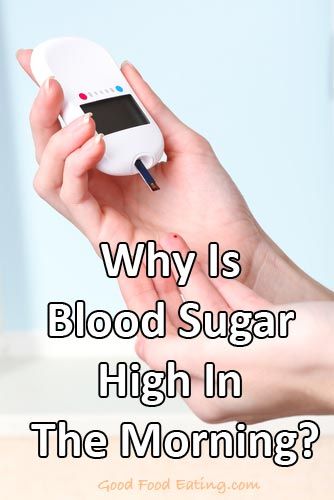 Diabetes mellitus occurs in 6% of the world’s population, annually over 2 million people die from it. Moreover, in 90% of cases, patients are diagnosed with type 2 diabetes mellitus, in the development of which the most important role belongs to obesity and a sedentary lifestyle.
Diabetes mellitus occurs in 6% of the world’s population, annually over 2 million people die from it. Moreover, in 90% of cases, patients are diagnosed with type 2 diabetes mellitus, in the development of which the most important role belongs to obesity and a sedentary lifestyle.
Proper nutrition plays an important role in the treatment of most diseases, but in diabetes it is of key importance. For example, in obese patients with type 2 diabetes, a diet that promotes weight loss can often stop the progression of the disease and the development of dangerous complications.
There are basic principles of nutrition for obesity and the risk of developing diabetes:
The diet should include the full range of macronutrients – proteins (15%), fats (25%) and carbohydrates (60%).
– When it comes to diabetes prevention, many people think about the need for almost complete restriction of carbohydrates in their diet. And at first glance, this looks quite logical – after all, it is carbohydrates that increase blood sugar levels.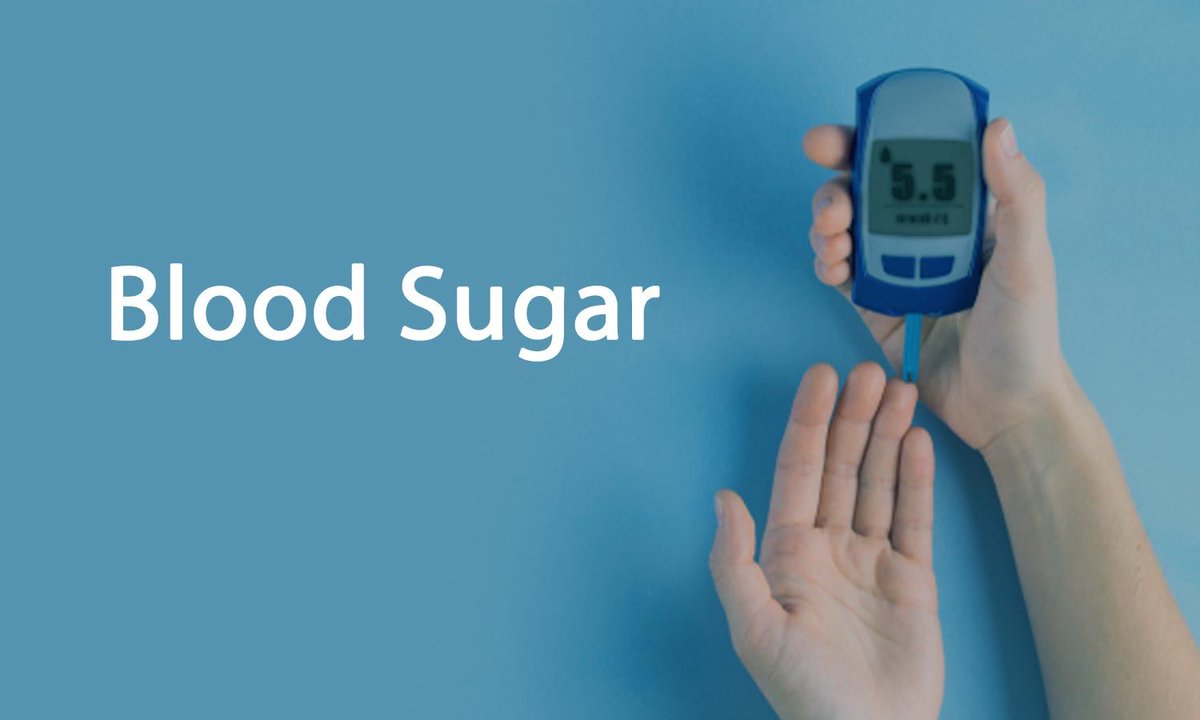 But still, you should not rush into this. Firstly, carbohydrates are different, and secondly, they perform many useful functions in our body. You just need to understand what carbohydrates and at what time you can afford. You can not exclude carbohydrates from the diet or limit their volume: this will not lead to a decrease in glucose levels – it will be synthesized in the body from fats and proteins. It is important to minimize the intake of carbohydrates that are easily digestible (sugar, sugary drinks, refined cereals) – they lead to a sharp jump in blood glucose, which is difficult to quickly compensate for the introduction of insulin or hypoglycemic drugs. It is necessary to give preference to “complex” carbohydrates, such as vegetables, fruits, whole grains – they are slowly digested and the level of glucose in the blood rises smoothly.
But still, you should not rush into this. Firstly, carbohydrates are different, and secondly, they perform many useful functions in our body. You just need to understand what carbohydrates and at what time you can afford. You can not exclude carbohydrates from the diet or limit their volume: this will not lead to a decrease in glucose levels – it will be synthesized in the body from fats and proteins. It is important to minimize the intake of carbohydrates that are easily digestible (sugar, sugary drinks, refined cereals) – they lead to a sharp jump in blood glucose, which is difficult to quickly compensate for the introduction of insulin or hypoglycemic drugs. It is necessary to give preference to “complex” carbohydrates, such as vegetables, fruits, whole grains – they are slowly digested and the level of glucose in the blood rises smoothly.
– it is necessary to reduce the content of animal fats in the diet, which contribute to the development of atherosclerosis, and give preference to vegetable fats, fatty fish varieties are also useful;
– you should eat often, fractionally and in small portions to avoid sharp “splashes” of blood glucose levels;
– the diet should be rich in vitamins and minerals: their deficiency exacerbates metabolic disorders.
In patients with normal weight, the daily calorie content of the diet should correspond to energy expenditure, and overweight patients (which is more common in type 2 diabetes) should consume fewer calories than they spend in order to gradually and smoothly get rid of extra pounds. This is the easiest and most effective way to reduce weight!
An important role belongs to physical activity. Muscle work contributes to the utilization of glucose, helps to reduce weight, increases the sensitivity of receptors to insulin. In addition, physical exercises create conditions for better blood supply to all organs, primarily the heart and the skeletal muscles themselves, the formation of new vessels to replace the destroyed ones, which avoids their “drying out”.
According to the Russian and foreign diabetic associations, very little is needed to prevent the development of diabetes – only 150 minutes of active physical activity per week. Of course, we are not talking about calm walking, but the type of activity does not matter.

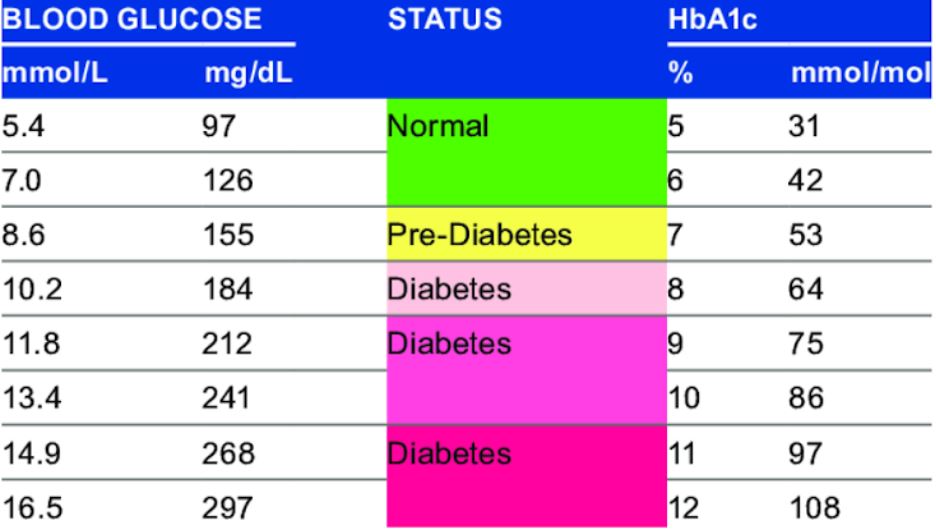 Signs and symptoms of DKA are:
Signs and symptoms of DKA are:
 7% (Prediabetes)
7% (Prediabetes) Check out our guide of which veggies to avoid!
Check out our guide of which veggies to avoid! It may not be, since it affects blood sugar levels
It may not be, since it affects blood sugar levels